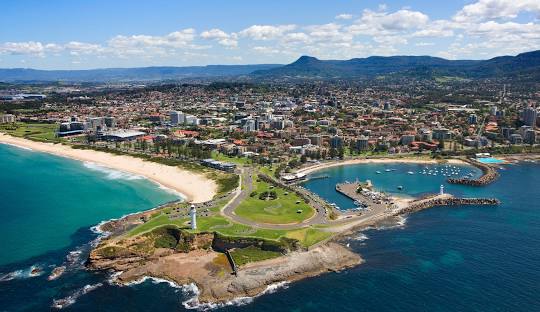
Wollongong Region: A Historic Industrial Hub Nestled Between Beaches and Escarpments
Posted by on
The Wollongong area, extending from Helensburgh in the north to Windang and Yallah in the south, is a vital part of New South Wales’ South Coast region. Geologically situated within the southeastern Sydney basin — a vast formation spanning from Newcastle to Nowra — Wollongong uniquely occupies a narrow coastal plain bordered by pristine surf beaches on one side and the lush, rainforest-covered Illawarra Escarpment cliffs on the other.
Wollongong is widely recognized for its robust industrial sector and active port facilities, which have shaped the city’s identity for decades. Alongside its industrial roots, the city boasts a remarkable physical setting that draws tourists year-round. Visitors and locals alike enjoy Wollongong’s diverse cultural landmarks, including two cathedrals, numerous churches, and the prominent Nan Tien Temple, which highlights the city’s multicultural fabric.
Historically, Wollongong has deep ties to coal mining and heavy industry, establishing it as a critical regional center for manufacturing and the South Coast fishing industry. The University of Wollongong, home to approximately 38,000 students, adds a vibrant academic and cultural dimension to the city.
The region’s history traces back to its original inhabitants, the Dharawal Indigenous Australians. European exploration began in 1796 when navigators George Bass and Matthew Flinders landed at nearby Lake Illawarra. Early settlement in the 19th century was driven by cedar cutters and graziers, with significant developments such as the establishment of a military barracks in 1830 and the formal planning and gazettal of the town in 1834.
Infrastructure grew rapidly in the mid-1800s, including the construction of the main road down the escarpment via Bulli Pass by convict labor and the introduction of early communication and transport services like the horse-drawn tramway from Mount Keira to the harbour. The city’s harbour played a central role in its industrial growth, with Patrick Lahiff’s 1870s coke works marking Wollongong’s early ventures into coal processing. Though the original beehive coke ovens were demolished in 1892, their remains have been preserved as a historical site, commemorating the city’s industrial heritage.
Today, Wollongong stands as a dynamic city that balances its industrial past with natural beauty, cultural richness, and educational excellence, making it a significant hub on Australia’s South Coast. The area was originally inhabited by the Dharawal Indigenous Australians.